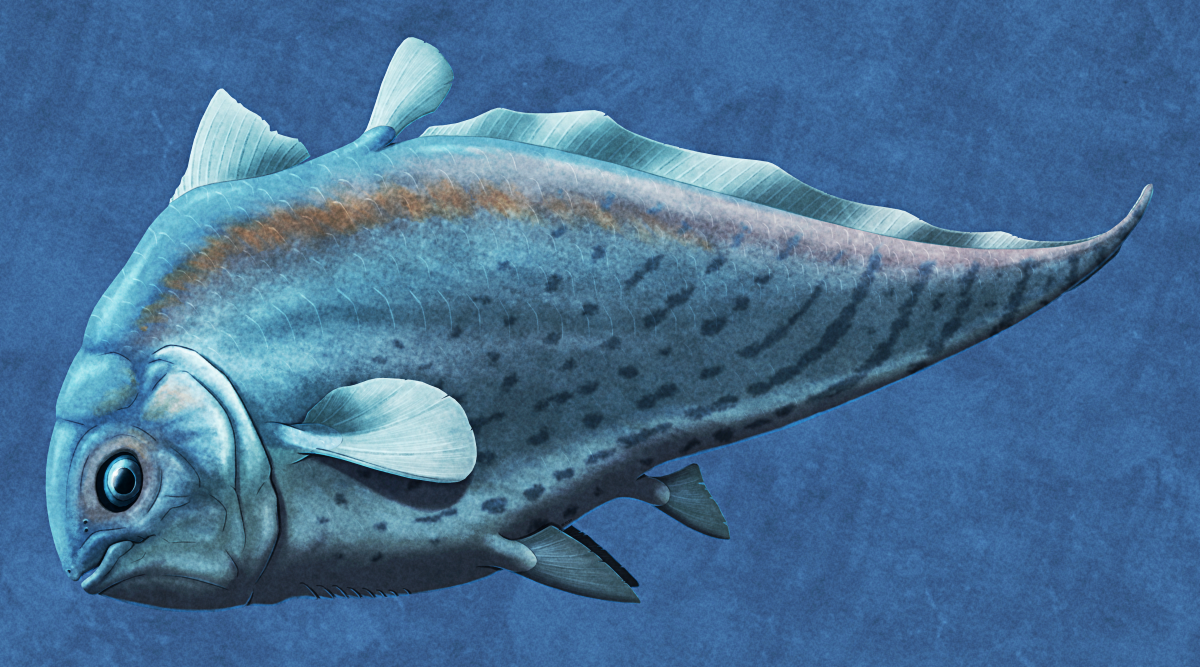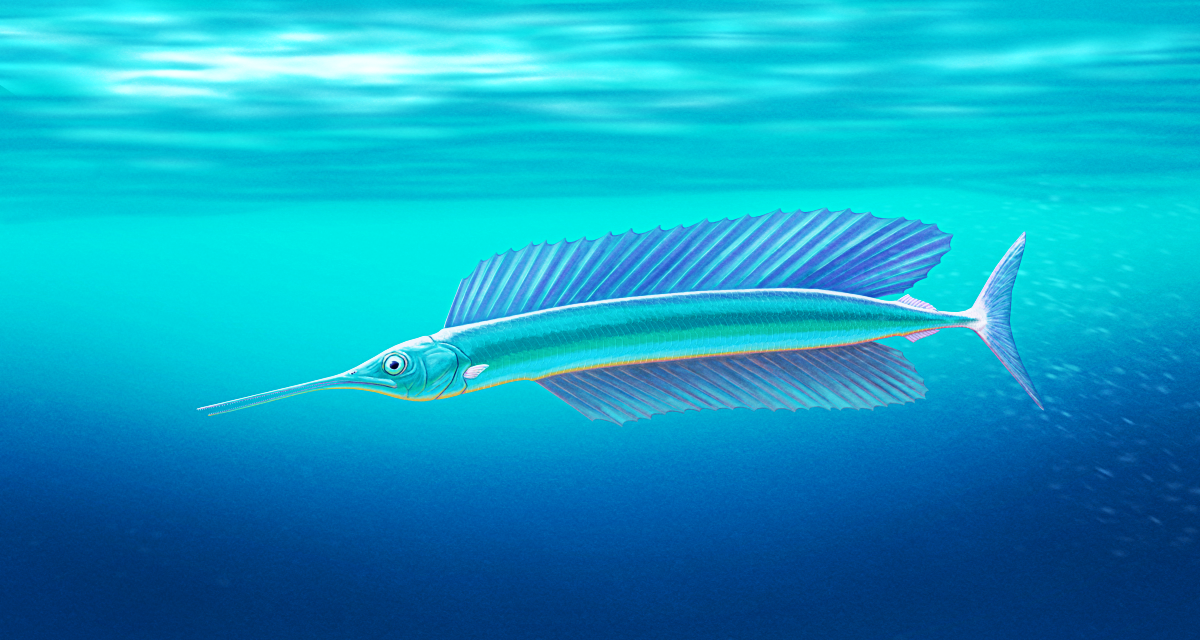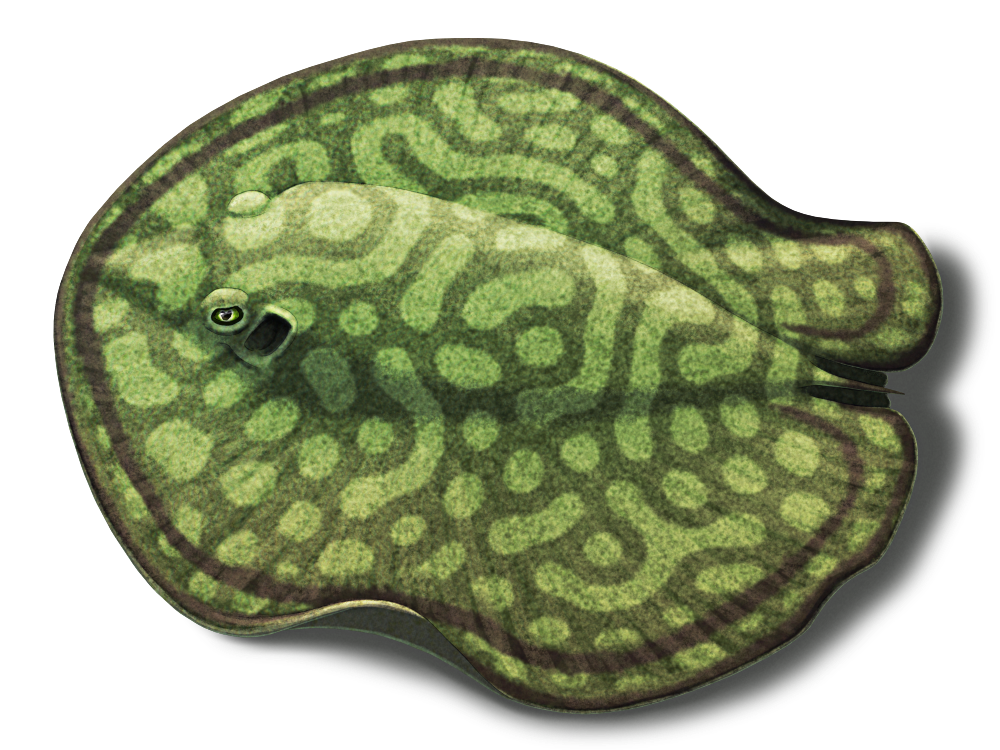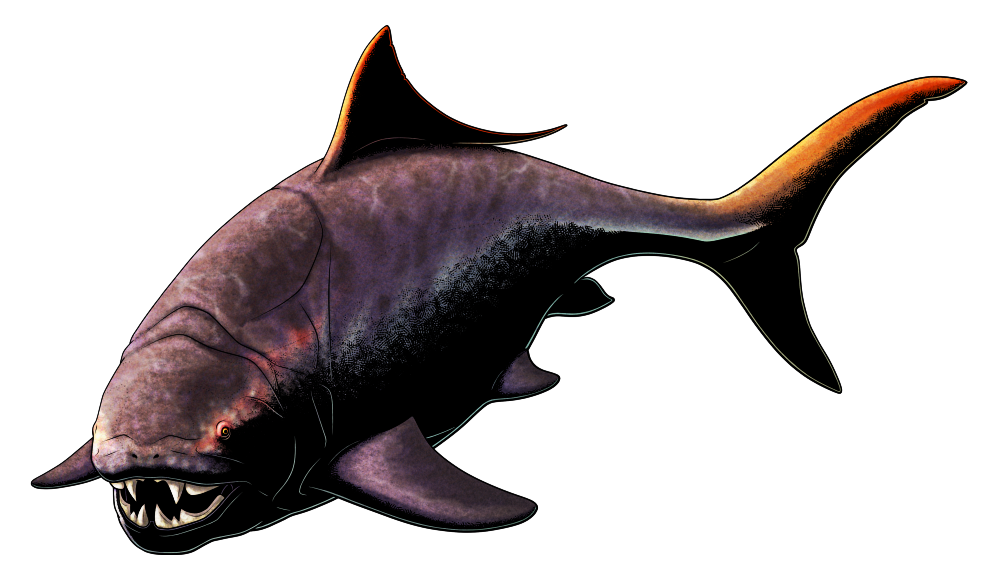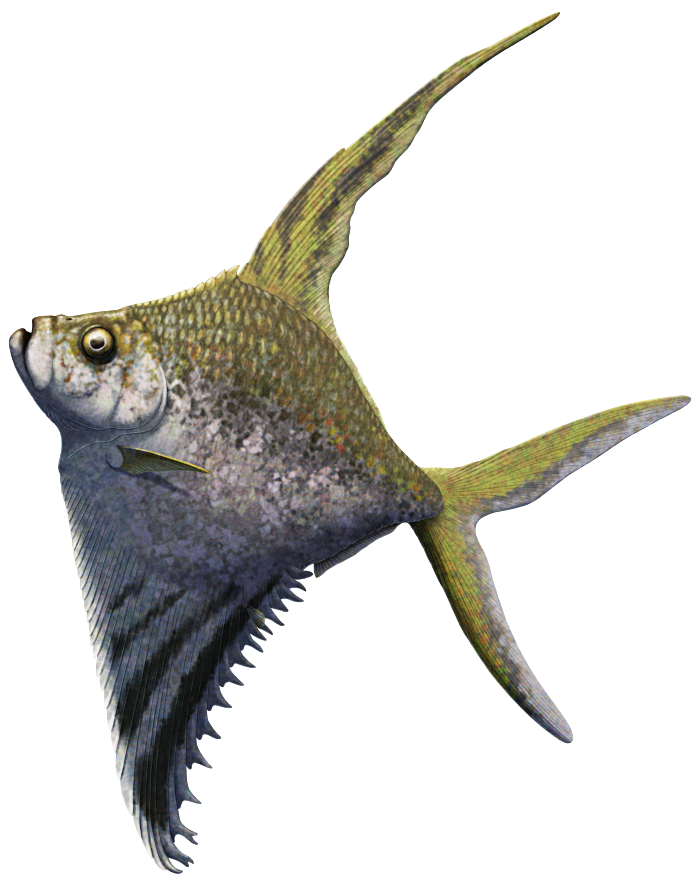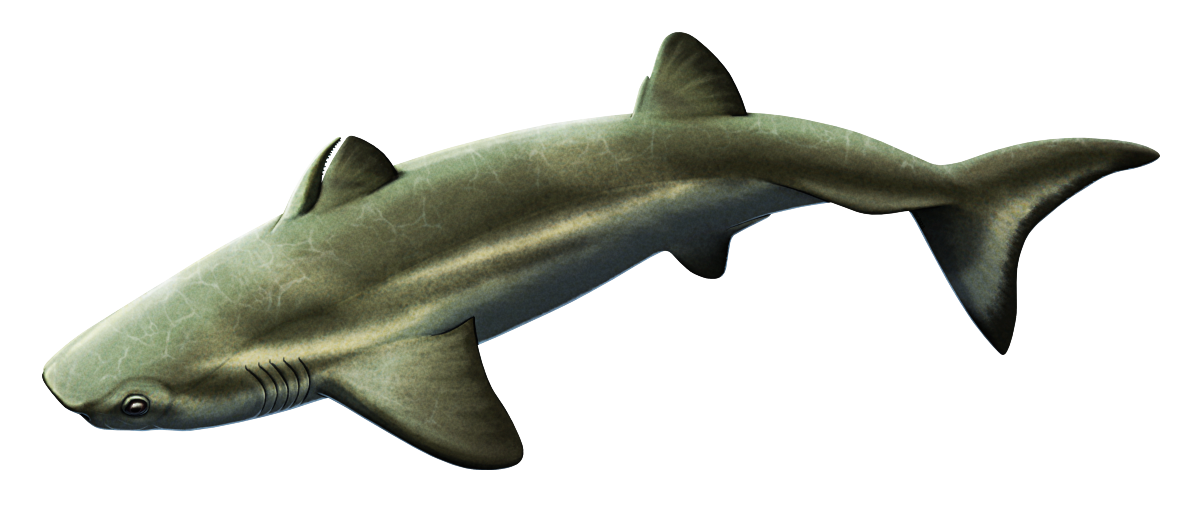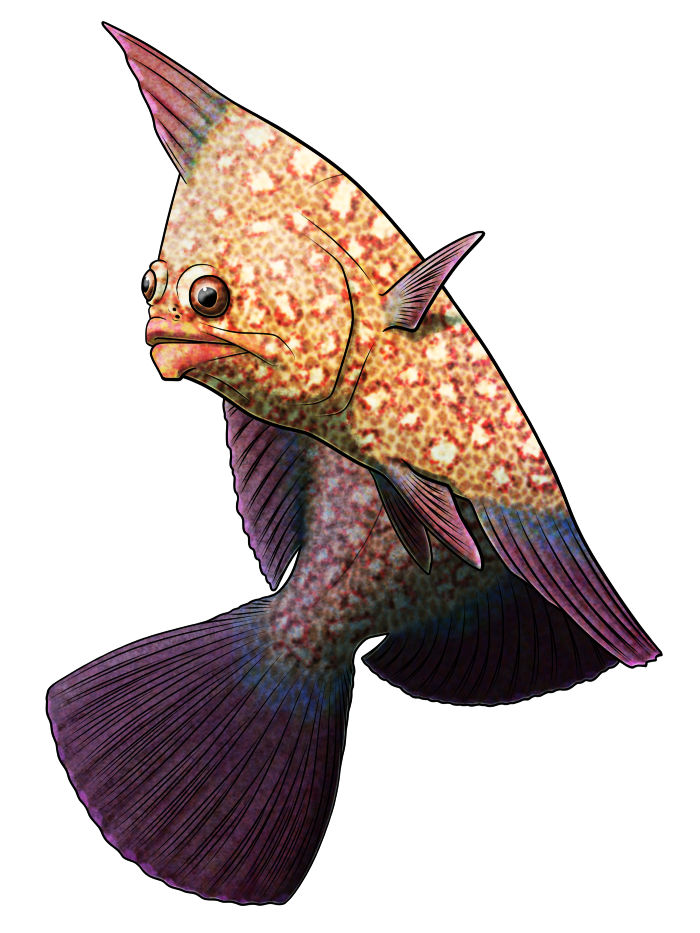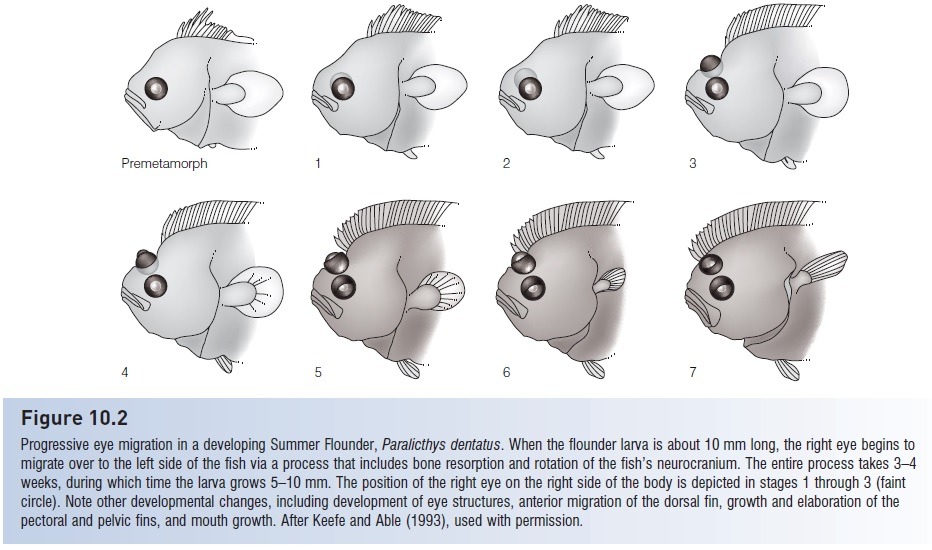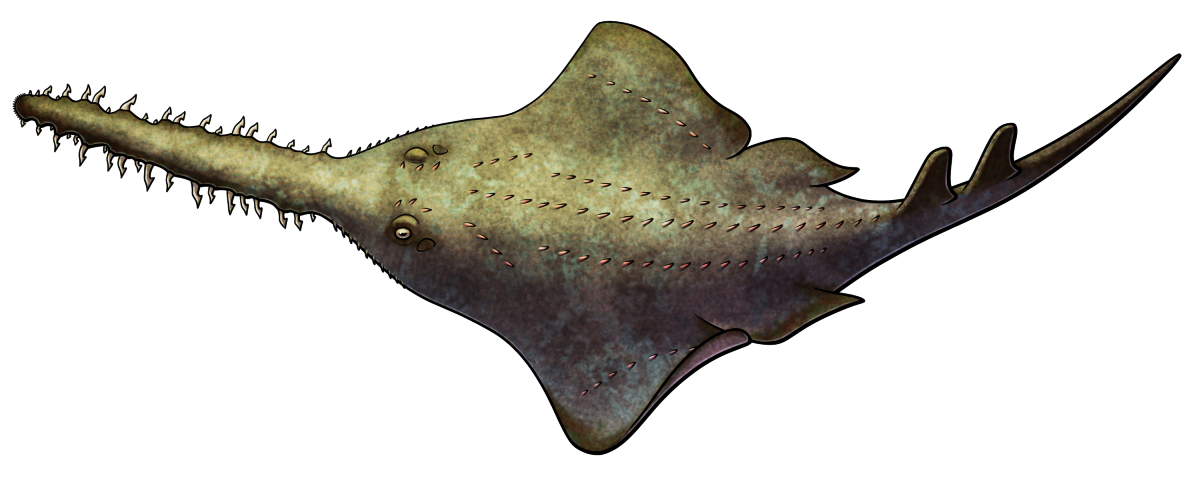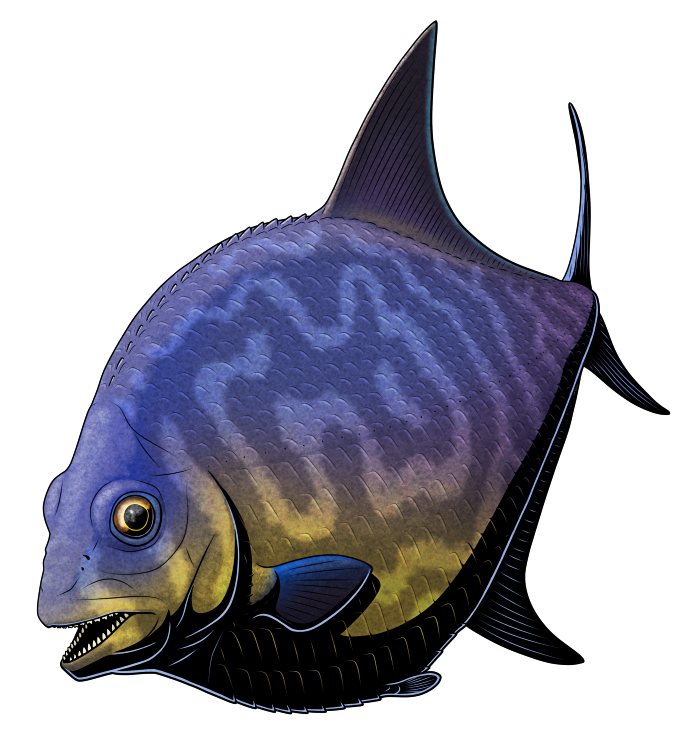Yeah, I’m keeping this stuff going again for another round of Spectober!
An anonymous request asked for a “big macropredatory ray”:
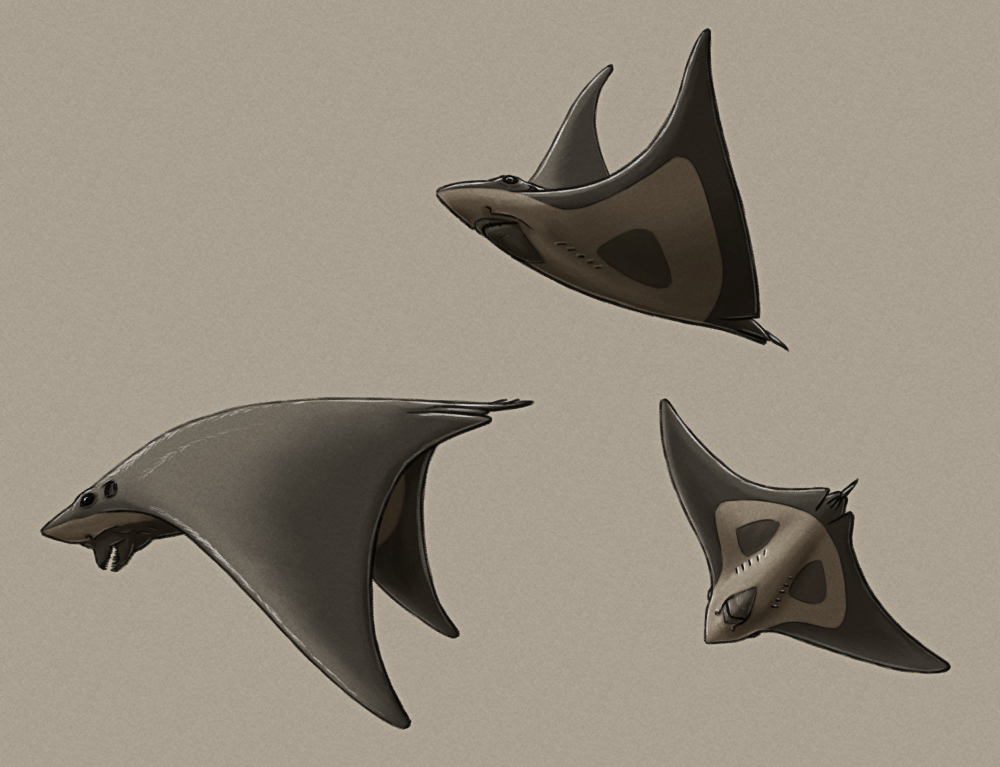
Speirobatis thanasima is a large ray found in open oceanic waters, reaching sizes comparable to the modern giant manta ray at around 3m in length (~10′) with a wingspan of over 5m (~16’5″).
But despite its body shape closely resembling that of mobulids or myliobatids, its closest present-day relative is actually the pelagic stingray. Already being active hunters with mouths full of sharp pointed teeth, these ancestral rays gradually evolved bigger body sizes and began occupying an apex predator niche similar to that of large sharks and toothed whales.
Speirobatis is a strong swimmer, using flapping motions of its triangular wing-like pectoral fins to travel at high speed and make acrobatic jumps out of the water. Highly intelligent and social, it lives in family groups that hunt cooperatively – encircling and herding schools of fish tightly into bait balls, taking turns stunning prey with slaps of their fins, and then grabbing incapacitated individuals with snaps of their protrusible jaws.
Groups will also tackle larger prey such as marine mammals and sharks, harassing and chasing targets to exhaustion while taking quick opportunistic bites out of them.

